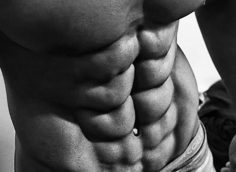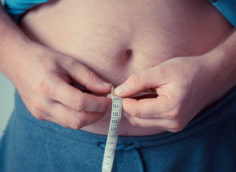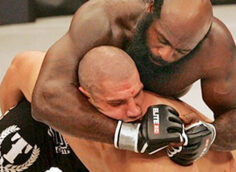In part 1 of this article, I outlined the concept of nutrient timing and discussed two of the key phases of nutrient timing: the Energy Phase and the Anabolic Phase. This week I'll address the two other key phases of nutrient timing: the Growth Phase and the "Rest of The Day" Phase.
After protein and carbohydrate have been provided during the Energy and Anabolic Phases, the net protein balance of the body shifted toward the positive; muscle glycogen restored, catabolism blunted and anabolism increased, it's time to consider how to keep the growth process moving forward. After all, the damage has been done, the acute phase response is now activated to clean up the mess (see Lonnie Lowery's Muscle Masochism for more on this process), and your metabolism is going to be racing until tomorrow. It's definitely time to feed!
However, even though the body is under construction, it's moving quickly back toward normal physiological functioning during this Growth Phase. In other words, the growth window is closing and this means bye-bye to improved insulin sensitivity. You can also sit back and watch your Testosterone and growth hormone concentrations fall. And muscle protein turnover is slowing down, reaching a rate just above normal.
With this slow return to "normalcy", it's important to ditch the high glycemic carbohydrates and rapidly digested proteins. That's right, while these foods were the anabolic superstars of the Energy and Anabolic phases, you'll have to thank them and send them on their merry way during the Growth Phase and the "Rest of the Day" Phase. Kickin' insulin is great during and after exercise, but elevate the insulin all day and your reward will be chub.
While the exact when of the Growth Phase is a bit ambiguous, studies from my laboratory at the University of Western Ontario have recently demonstrated that unless muscle glycogen concentrations are severely reduced (greater than 70% depletion), carbohydrate and protein meals can help restore much of the depleted muscle glycogen in less than 6 hours. So, for simplicity sake, I consider the Growth Phase to last 6 hours after training.
During the Growth Phase, it's important to continue to feed some carbohydrate and protein but definitely begin to reduce the total amount of carbohydrates ingested per meal while increasing the amount of protein ingested per meal. While a 2: 1 ratio of carbohydrate to protein was suggested for the Energy and Anabolic Phases, a ratio closer to 1: 1 might be optimal now.
Also, you're going to start chewing real food rather than slurping down drinks. If we assume you'll be drinking a postexercise drink immediately after training and you train in the morning or early evening, you'll have time for about two food meals consisting of slower digesting proteins (meats, cottage cheese, yogurt, etc) and low glycemic carbohydrates (fruits, vegetables, beans, ancient grains like quinoa, etc). If you train late in the evening, you're screwed – just kidding. Actually, if you train late in the evening you can simply ingest one meal as specified and either have a midnight shake (a Grow! and some oatmeal might make a good choice) or simply skip the second Growth Phase meal.
Again, how much to eat depends on your goals. Once you've calculated your daily energy needs, simply factor these meals into your total daily energy intake such that they are contributing toward your total intake. Remember, the Growth Phase, like the Energy and Anabolic Phases, is still marked by increased fat oxidation (even in the presence of some dietary carbohydrate) and increased glycogen synthesis (especially in the presence of some dietary carbohydrate). So take advantage of this by ingesting most of your daily carbs during these three phases.
For those of you keeping score, the Energy, Anabolic, and Growth Phases cover about 7 or 8 hours of your training day. During these 7 – 8 hours, you'll be ingesting about 4 total meals. Assuming you sleep about 8 hours per day, that leaves 8 – 9 hours and 3 meals to go. It's these 8 – 9 hours and 3 meals that I consider "the rest of the day."
Since the Rest of the Day is marked by normal physiology, the food you eat during this phase should be adapted to what you know about your tolerance to carbohydrates and fats in the diet. For example, some of you may have relatively poor carbohydrate tolerance and insulin sensitivity. As a result, you should be eating mostly protein and a blend of fats during Rest of the Day. Others of you might do better on a higher carbohydrate diet. As a result, you should be eating more protein and carbohydrates during the Rest of the Day (as long as you don't neglect getting your dietary fat, especially your essential fats).
In my experience, most trainees interested in carrying a low body fat percentage will benefit from simply eating protein and fats (with veggies) during the 3 Rest of the Day meals; carbohydrates and protein in a 2: 1 ratio during the 2 Energy and Anabolic meals; and carbohydrates and protein in a 1:1 ratio (some healthy fats can even be thrown in there) during the 2 Growth meals.
As discussed, the Rest of the Day Phase is what's left after your exercise and the 6 hours postexercise. During this time, it's important to use what you know about your body to determine what to eat and your goals to determine how much to eat. Some of you can get away with a few carbohydrate and protein meals with some good fats thrown in. Others will have to go protein and fat meals with some veggies thrown it.
However, either way, you can rest assured that muscle glycogen concentrations have been maximized during your Energy, Anabolic and Growth Phases and that you've done everything in your power to stimulate the growth and recovery process.
One interesting way of looking at your food consumption during a "nutrient timing day" is that you're eating like Atkins Diet proponents might recommend during 3 of your meals (Rest of the Day Phase); like Zone Diet proponents might recommend during 2 of your meals (Growth Phase); and like the American Dietetics Association might recommend during 2 more of your meals (Energy and Anabolic Phases).
Of course, this system wasn't designed solely to reconcile the three big dietary movements but rather to use what we currently know about exercise metabolism to meet your daily energy needs in order to optimize growth, adaptation, performance and body composition. However, it's certainly interesting to consider that the most effective nutritional strategy for athletes (nutrient timing) actually takes the best from each of the three most popular nutritional movements and finds a happy medium among them.
With the science of nutrient timing gradually producing more and more practical information, isn't it about time you started using this information to support your training? If maximal muscularity, improved athletic performance, positive shifts in body composition, and marked improvements in recovery are your goal (uh, did I miss anyone), I encourage you to give the principles of nutrient timing a try. These principles form the foundation of my 7 Habits and Massive Eating Reloaded plans and will influence the field of sports nutrition for years to come.
- Bishop NC et al. Influence of carbohydrate supplementation on plasma cytokine and neutrophil degranulation responses to high intensity intermittent exercise. Int J Sport Nutr Exerc Metab. 2002 Jun;12(2):145-56. PubMed.
- Fournier PA et al. Glycogen resynthesis in the absence of food ingestion during recovery from moderate or high intensity physical activity: novel insights from rat and human studies. Comp Biochem Physiol A Mol Integr Physiol. 2002 Nov;133(3):755-63. PubMed.
- Ivy JL. Glycogen resynthesis after exercise: effect of carbohydrate intake. Int J Sports Med. 1998 Jun;19 Suppl 2:S142-5. PubMed.
- Ivy JL et al. Effect of a carbohydrate-protein supplement on endurance performance during exercise of varying intensity. Int J Sport Nutr Exerc Metab. 2003 Sep;13(3):382-95. PubMed.
- Jentjens RL et al. Addition of protein and amino acids to carbohydrates does not enhance postexercise muscle glycogen synthesis. J Appl Physiol (1985). 2001 Aug;91(2):839-46. PubMed.
- Kiens B et al. Utilization of skeletal muscle triacylglycerol during postexercise recovery in humans. Am J Physiol. 1998 Aug;275(2):E332-7. PubMed.
- Kimber NE et al. Skeletal muscle fat and carbohydrate metabolism during recovery from glycogen-depleting exercise in humans. J Physiol. 2003 May 1;548(Pt 3):919-27. PubMed.
- MacDougall JD et al. The time course for elevated muscle protein synthesis following heavy resistance exercise. Can J Appl Physiol. 1995 Dec;20(4):480-6. PubMed.
- Maughan RJ. Fluid and electrolyte loss and replacement in exercise. J Sports Sci. Summer 1991;9 Spec No:117-42. PubMed.
- Nicholas CW et al. Carbohydrate-electrolyte ingestion during intermittent high-intensity running. Med Sci Sports Exerc. 1999 Sep;31(9):1280-6. PubMed.
- Nieman DC. Exercise immunology: nutritional countermeasures. Can J Appl Physiol. 2001;26 Suppl:S45-55. PubMed.
- Noakes TD. Fluid replacement during exercise. Exerc Sport Sci Rev. 1993;21:297-330. PubMed.
- Pascoe DD et al. Glycogen resynthesis in skeletal muscle following resistive exercise. Med Sci Sports Exerc. 1993 Mar;25(3):349-54. PubMed.
- Phillips SM et al. Mixed muscle protein synthesis and breakdown after resistance exercise in humans. Am J Physiol. 1997 Jul;273(1 Pt 1):E99-107. PubMed.
- Price TB et al. Human muscle glycogen resynthesis after exercise: insulin-dependent and -independent phases. J Appl Physiol (1985). 1994 Jan;76(1):104-11. PubMed.
- Tipton KD et al. Acute response of net muscle protein balance reflects 24-h balance after exercise and amino acid ingestion. Am J Physiol Endocrinol Metab. 2003 Jan;284(1):E76-89. PubMed.
- Tipton KD et al. Timing of amino acid-carbohydrate ingestion alters anabolic response of muscle to resistance exercise. Am J Physiol Endocrinol Metab. 2001 Aug;281(2):E197-206. PubMed.
- van Loon LJ et al. Ingestion of protein hydrolysate and amino acid-carbohydrate mixtures increases postexercise plasma insulin responses in men. J Nutr. 2000 Oct;130(10):2508-13. PubMed.
- van Loon LJ et al. Maximizing postexercise muscle glycogen synthesis: carbohydrate supplementation and the application of amino acid or protein hydrolysate mixtures. Am J Clin Nutr. 2000 Jul;72(1):106-11. PubMed.
- van Loon LJ et al. Plasma insulin responses after ingestion of different amino acid or protein mixtures with carbohydrate. Am J Clin Nutr. 2000 Jul;72(1):96-105. PubMed.
- Zachwieja JJ et al. Influence of muscle glycogen depletion on the rate of resynthesis. Med Sci Sports Exerc. 1991 Jan;23(1):44-8. PubMed.





